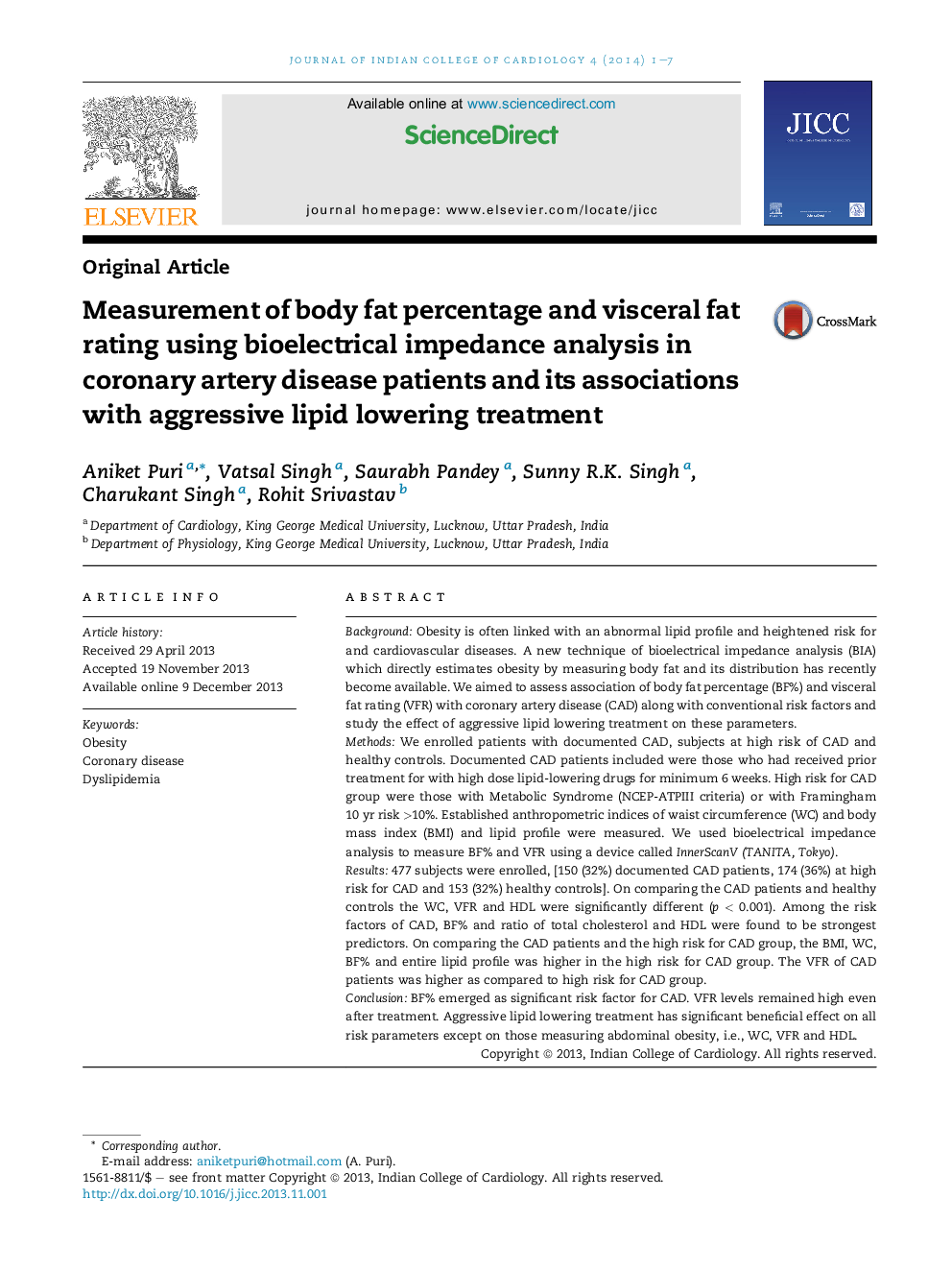| Article ID | Journal | Published Year | Pages | File Type |
|---|---|---|---|---|
| 2973940 | Journal of Indian College of Cardiology | 2014 | 7 Pages |
BackgroundObesity is often linked with an abnormal lipid profile and heightened risk for and cardiovascular diseases. A new technique of bioelectrical impedance analysis (BIA) which directly estimates obesity by measuring body fat and its distribution has recently become available. We aimed to assess association of body fat percentage (BF%) and visceral fat rating (VFR) with coronary artery disease (CAD) along with conventional risk factors and study the effect of aggressive lipid lowering treatment on these parameters.MethodsWe enrolled patients with documented CAD, subjects at high risk of CAD and healthy controls. Documented CAD patients included were those who had received prior treatment for with high dose lipid-lowering drugs for minimum 6 weeks. High risk for CAD group were those with Metabolic Syndrome (NCEP-ATPIII criteria) or with Framingham 10 yr risk >10%. Established anthropometric indices of waist circumference (WC) and body mass index (BMI) and lipid profile were measured. We used bioelectrical impedance analysis to measure BF% and VFR using a device called InnerScanV (TANITA, Tokyo).Results477 subjects were enrolled, [150 (32%) documented CAD patients, 174 (36%) at high risk for CAD and 153 (32%) healthy controls]. On comparing the CAD patients and healthy controls the WC, VFR and HDL were significantly different (p < 0.001). Among the risk factors of CAD, BF% and ratio of total cholesterol and HDL were found to be strongest predictors. On comparing the CAD patients and the high risk for CAD group, the BMI, WC, BF% and entire lipid profile was higher in the high risk for CAD group. The VFR of CAD patients was higher as compared to high risk for CAD group.ConclusionBF% emerged as significant risk factor for CAD. VFR levels remained high even after treatment. Aggressive lipid lowering treatment has significant beneficial effect on all risk parameters except on those measuring abdominal obesity, i.e., WC, VFR and HDL.
